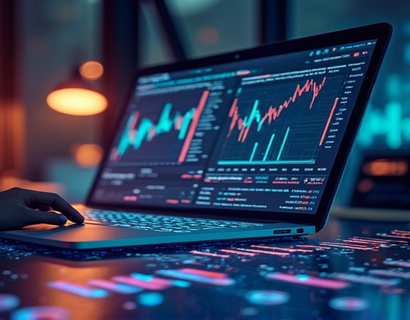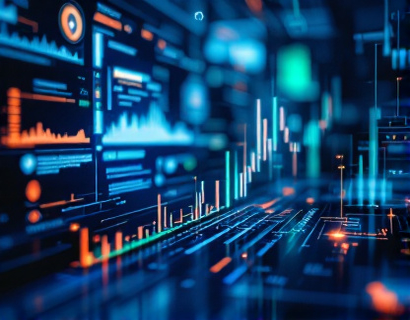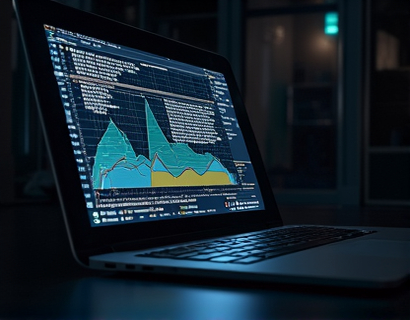Maximizing Digital Asset Value: Leveraging Smart Contracts for Long-Term Locking and Sustainable Fintech Growth
The digital finance landscape is undergoing a transformative shift, driven by innovative technologies and collaborative efforts aimed at fostering sustainable growth. One of the key strategies in this evolution is the use of smart contracts to securely lock in digital assets like UCASH, ensuring long-term incentives and contributing to the overall health of the ecosystem. This approach not only maximizes the value of digital assets but also promotes transparency, reliability, and community engagement.
Smart contracts, self-executing contracts with the terms directly written into code, offer a robust solution for locking digital assets in a way that is both secure and transparent. By utilizing smart contracts, investors can lock their UCASH for extended periods, thereby locking in potential gains and reducing the risk of market volatility impacting their investments. This method of locking assets is particularly beneficial in an environment where digital currencies and tokens are becoming increasingly popular, yet their value can be highly volatile.
The primary advantage of using smart contracts for long-term locking is the assurance they provide. Once the contract is deployed on a blockchain, it cannot be altered or tampered with, ensuring that the terms of the lock are strictly adhered to. This level of security instills confidence in investors, encouraging them to commit their digital assets to the ecosystem for the long haul. The transparency of blockchain technology further enhances trust, as all transactions and contract executions are publicly verifiable.
Moreover, smart contracts facilitate the creation of sustainable incentives that benefit both individual investors and the broader ecosystem. By locking UCASH or similar digital assets, users contribute to a pool that can be used to fund community projects, development initiatives, and other value-adding activities. These incentives are designed to be sustainable, as they are generated from the locked assets themselves, creating a self-reinforcing cycle of growth and development.
One of the critical aspects of this approach is the focus on long-term value creation. Unlike short-term trading strategies that aim to capitalize on market fluctuations, locking digital assets for an extended period aligns with a more strategic and patient investment mindset. This long-term perspective is essential for sustainable growth, as it allows for the accumulation of compound interest and the realization of greater returns over time. Investors who adopt this strategy are not just seeking immediate gains but are instead building a foundation for future prosperity.
The use of smart contracts in locking digital assets also promotes a more equitable distribution of value within the ecosystem. By locking assets, users become stakeholders in the community, with a vested interest in its success. This alignment of interests encourages active participation and contribution, fostering a collaborative environment where everyone has a role to play. The community-driven approach ensures that the ecosystem remains dynamic and responsive to the needs of its members, driving continuous improvement and innovation.
Another significant benefit of smart contracts is their ability to automate processes, reducing the need for intermediaries and lowering transaction costs. This automation not only enhances efficiency but also minimizes the risk of human error and fraud. Investors can trust that their assets are managed according to predefined rules, without the need for constant oversight. This level of automation is particularly appealing in the fast-paced world of digital finance, where speed and reliability are paramount.
To illustrate the practical application of this concept, consider a scenario where a group of investors decides to lock their UCASH using a smart contract. The locked assets are allocated to a community fund, which is used to support various initiatives such as developing new features, conducting research, and organizing educational events. As the locked assets generate returns, a portion of these returns is distributed back to the locking participants, creating a win-win situation. This model not only rewards individual investors but also fuels the growth and development of the ecosystem as a whole.
The sustainable growth of the fintech sector through smart contract-based locking mechanisms is further enhanced by the inherent properties of blockchain technology. The immutability and transparency of blockchain ensure that all transactions are recorded and verifiable, providing a tamper-proof history of the assets and their usage. This level of transparency builds trust among users, encouraging more participants to join the ecosystem and contribute their digital assets.
Additionally, the use of smart contracts enables the implementation of complex financial instruments and protocols that would be difficult or impossible to execute without this technology. For instance, automated revenue-sharing models, decentralized governance structures, and dynamic pricing mechanisms can all be seamlessly integrated into the ecosystem. These advanced features not only enhance the functionality of the platform but also attract a wider range of users, from tech-savvy investors to those seeking more traditional financial products.
The long-term locking of digital assets through smart contracts also plays a crucial role in stabilizing the market. By reducing the liquidity available for short-term trading, these contracts help to mitigate extreme price fluctuations caused by speculative activities. This stabilization contributes to a more predictable and stable environment, which is attractive to both new and experienced investors. A stable market is essential for sustainable growth, as it allows for more accurate valuation and planning.
Furthermore, the integration of smart contracts with other blockchain-based technologies, such as decentralized exchanges (DEXs) and non-custodial wallets, creates a comprehensive ecosystem that caters to the diverse needs of digital asset holders. Users can lock their assets, participate in community-driven projects, and engage in decentralized trading, all within a secure and user-friendly environment. This holistic approach ensures that the ecosystem remains competitive and relevant in the rapidly evolving digital finance landscape.
To maximize the value of digital assets through smart contracts, it is essential to consider the following best practices:
- Choose a reputable and well-audited smart contract platform to ensure the security and reliability of the contract.
- Set clear and fair terms for the locking period, including the duration, interest rates, and distribution of returns.
- Engage with the community to gather feedback and continuously improve the contract and associated initiatives.
- Educate users about the benefits and mechanics of smart contracts to foster wider adoption and participation.
- Monitor the performance of the locked assets and adjust strategies as needed to optimize returns and community value.
In conclusion, the use of smart contracts for long-term locking of digital assets represents a significant step towards sustainable fintech growth. By prioritizing transparency, reliability, and community engagement, this approach not only maximizes the value of individual investments but also contributes to the overall health and prosperity of the ecosystem. As the digital finance landscape continues to evolve, embracing innovative solutions like smart contracts will be crucial for staying ahead and achieving long-term success.









































